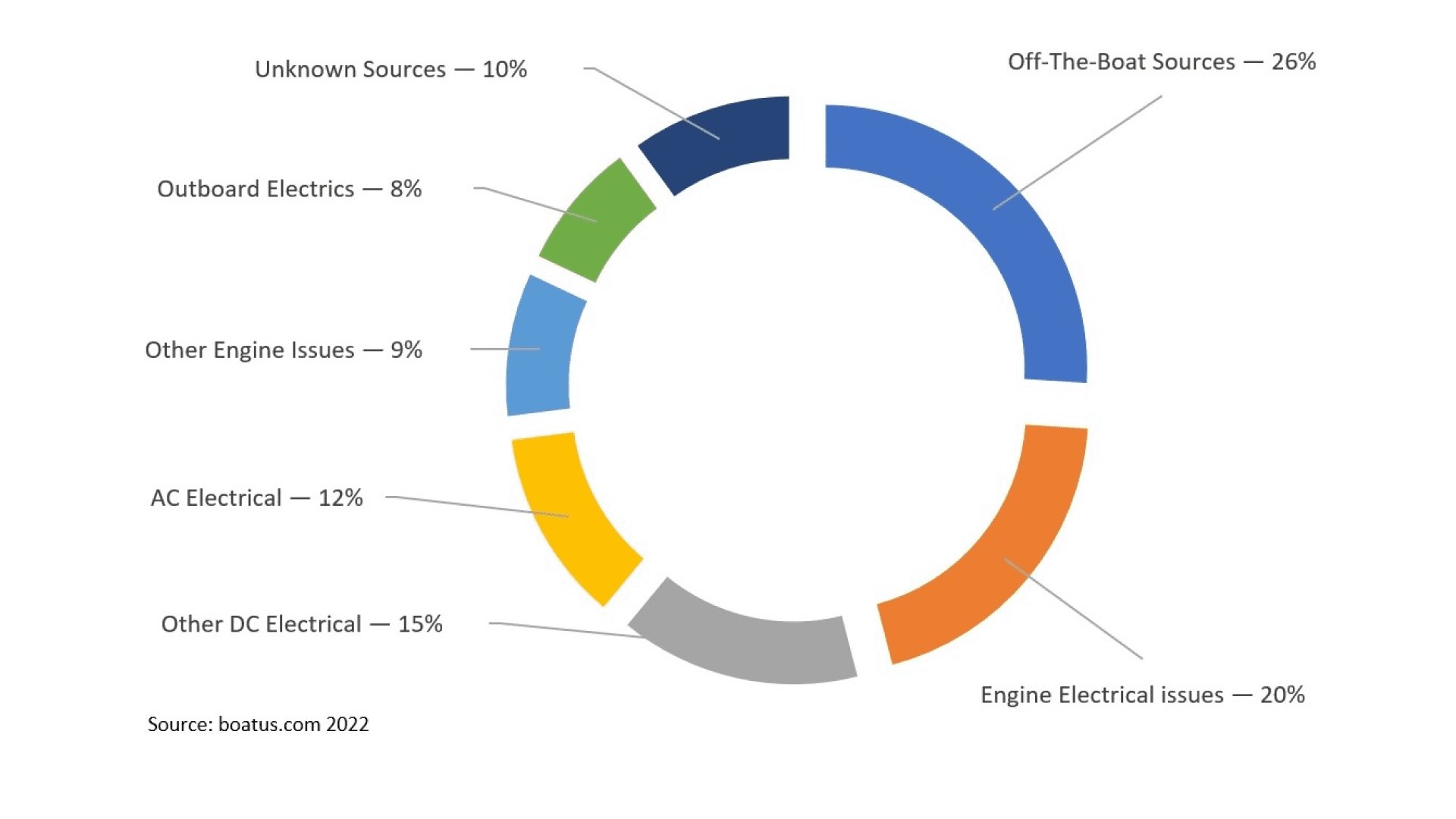Fire Safety, Part 1: Relevancy and Regulations
Find out more in the second part
Introduction
Comparing a boat to a house, we often forget one crucial detail: the energy source, unlike in most houses, is located onboard. It is like having a power plant in your basement making the risks and safety issues much greater. Add to this being at sea, where you cannot just dial 911 and expect the firetruck to come within minutes, and the fire safety issues become crucial.
An onboard fire is one of the worst fears for any seaman. There are a lot of flammable materials on a boat, and fire can spread quickly. Within minutes, there might be a hot, smokey situation with possibly toxic fumes. Once a fire takes hold it is highly unlikely that it will be successfully tackled.
Why do boat fires start

Fire protection can be passive and active. The passive part includes fire protection and fire detection. Active part is the fire extinction. In this article we will address international regulations, discuss available fire safety and protection measures and tools, and look into the fire safety tools used by Bering Yachts.
International Regulations
The first fire protection requirements for international shipping were developed as a part of the 1914 International Convention for the Safety of Life at Sea (SOLAS) in response to the sinking of the Titanic in 1912. Since then, these guidelines were modified several times, often after a tragedy at sea exposed an issue not dealt with in previous revisions.
Current version of SOLAS, from 1974, has a number of amendments, with the latest introduced by the International Maritime Organization (IMO) in 2020.
Chapter II-2 of SOLAS is designed to ensure that fires are:
- Prevented from occurring – for example by making sure that materials such as carpets and wall coverings are strictly controlled to reduce the fire risk
- Rapidly detected
- Contained, suppressed, and extinguished.
Designing ships to ensure easy evacuation routes for crew and passengers, outlining other special designs and activities are another key element of the Convention. (IMO 2022)
The IMO has also developed and organized two international codes under the SOLAS Convention. These are the International Code for the Application of Fire Test Procedures (2010 FTP Code) and the International Code for Fire Safety Systems (2002 FSS Code).
The FTP Code contains international fire test procedures and requirements for the materials regarding flammability, spread, smoke in compliance with the SOLAS. Parts of the code cover such issues as:
- Non-combustibility
- Smoke and toxicity for surface materials for bulkheads, linings, or ceilings; floor coverings; primary deck coverings; and plastic pipes
- Testing class divisions for a variety of products
- Fire door control systems
- Flammability for surface materials
- Flammability of the vertically supported textiles
- Fire-restricting materials and fire-resisting divisions of high-speed craft
- Tests of bedding components and upholstered furniture, etc.
The FSS Code is a set of international treaties that are designed to reduce the risk of fire, and aid in emergency response aboard ships. The latest edition of the Code, issued in 2015, covers:
- International shore connections
- Personal protection equipment and clothing
- Fire extinguishers
- Fixed gas and fixed foam extinguishing systems
- Fixed pressure water and water spraying and water-mist systems
- Automatic sprinkler, fire detection and fire alarm systems
- Fixed fire detection and alarm systems, including installation and control requirements
- Sample extraction smoke detection systems
- Low-location lighting systems
- Fixed emergency fire pumps
- Means of escape in case of any emergency
- Fixed deck foam systems
- Inert gas systems
- Fixed hydrocarbon gas detection systems (FSS 2015)
This legislation is mandatory for all signatory flag states, thereby enhancing the fire safety provisions onboard all ships in the world.
A number of International Classification Societies such as American Bureau of Shipping, the ABS (USA), Bureau Veritas (France), RINA (Italy), Germanischer Lloyd (Germany) and others have issued their own rules and recommendations to ensure technical support and compliance verification of the fire safety measures.
For example, the ABS has two actual guides dealing with fire protection. The 2022 Guide for Enhanced Fire Protection Arrangements introduces optional Enhanced Fire Protection notations for the accommodation areas and machinery spaces of vessels that are intended to increase the level of protection against fires onboard. (ABS 2022) The ABS Guidance Notes on Fire-Fighting Systems incorporate many requirements intended to prevent the onset of a fire. They focus on the proper design, installation, and operation of the vessel’s fire-fighting systems to ensure the safety of the vessel and the personnel onboard. In many cases, these rules directly reference SOLAS fire-fighting system requirements. (ABS 2017)
There are other international regulations covering separate aspects of fire safety measures. For instance, the International Organization for Standardization (ISO) has a number of standards including:
- ISO 9094:2022 Small craft — Fire protection
- ISO 201487:2018 Small craft — Permanently installed petrol and diesel fuel tanks
- ISO 22488:2011 Ships and marine technology — Shipboard fire-fighters’ outfits (protective clothing, gloves, boots and helmet)
- ISO 17631:2022 Ships and marine technology — Shipboard plans for fire control, damage control, life-saving appliances and means of escape
- ISO 24409:2014 Ships and marine technology — Design, location and use of shipboard safety signs, safety-related signs, safety notices and safety markings, and many others.
Bering Yachts fire safety is corresponding with the RINA Rules for the Classification of Pleasure Yachts and is inspected by Bureau Veritas for compliance with the appropriate codes and regulations. By the client’s choice we can be inspected by any other Classification Society and meet the other Classification rules.

